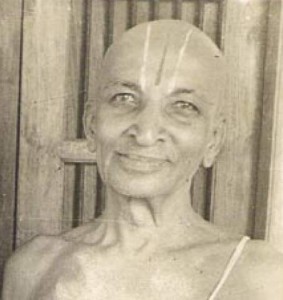With the worldwide spread of yoga there has been some understandable jostling amongst the different gurus and teachers with respect to lineages and yoga styles. This jostling inevitably leads to the question: What was Krishnamacharya’s style of yoga?
While the jostling is understandable this is not welcome for two reasons. One is that the very basis of yoga is to encourage movement away from the ego. Ancient sages and saints were reluctant to even identify themselves as authors of the texts that they wrote for this reason.
The other reason that this jostling for space within the yoga community is not welcome is that yoga has ways to go. Why fight amongst ourselves when there is so much to be done? An earlier post pointed out that upwards 98% of the world population is not doing yoga. With these kinds of numbers what sense it makes to fight over claims on the 2% of people that do practice yoga? That is like fighting over a small pool of water while the entire ocean lies unclaimed before you.
The question of Krishnamacharya’s style comes up because he is now viewed as the father of the modern yoga movement. Iyengar, Ashtanga, Viniyoga, Sai, and many other different yoga styles have been inspired by the teaching of Krishnamacharya. There are indeed many claimants to Krishnamacharya’s legacy. The question of Krishnamacharya’s style hence comes up when different yoga schools claim to be the closest to Krishnamacharya’s original teaching and style.
The purpose of this post is not to create controversy by taking a stand on what Krishnamacharya’s style was. The intention is in fact the opposite. The idea of this post is to show that the question of his style may be irrelevant. The reason this is so is that Krishnamacharya taught in no fixed style himself. He adopted his style based on his student’s need. To Pattabhi Jois who was young and strong he taught a vigorous form of yoga with challenging postures. To Indra Devi, who was sick when she arrived, he taught an extremely gentle form of yoga.
Srivatsa Ramaswami also attests to this. Krishnamacharya used to come to his home to teach a group class to his family. This was probably one of the rare group classes that he taught. He usually taught one-on-one and most of the yoga he showed his students was in the context of a yoga therapy rather than a yoga class. So what Srivatsa Ramaswami has to say about this class is fascinating:
“I studied in a small group made up of the members of my family gathered in a large room in our house. Krishnamacharya came to our house in the morning almost daily to teach. He taught different asanas to different members of our family, depending upon the age and condition of each individual. There was my eight-year-old kid sister, energetic and supple. I was about sixteen. My brother was around twenty and, at that time, in need of particular attention. Krishnamacharya gave him special assistance. Then there were my thirty-five-year-old mother and my forty-five-year-old father to complete the group. While there were some asanas and movements that all of us practiced, there were many that were different—particular and appropriate to each individual. Krishnamacharya had great skills of observation. He had a booming voice and a certain firmness and authority in his instructions. It was always fascinating to see him teach so many people differently at the same time, a feat in itself.”
The real question is not about style but of substance. The principles that Krishnamacharya taught never changed. He showed that these principles could be expressed differently based on the needs of his students. Human society is constantly evolving and with it the needs of humans keeps on changing. Krishnamacharya has given us the tools to go out and provide creative solutions to these changing needs based on the principles he has taught us. The question we should be asking is not “Is my style of yoga better than yours?” The question should be “Is the yoga I am teaching meeting the needs of my students?” If we answer this question in the affirmative and we stick to the principles he taught then we will be one with Krishnamacharya in spirit even if our styles may differ.


Pingback: Darren Main – Resources for the Urban Mystic » Blog Archive » What Would Krisnamacharya Do?